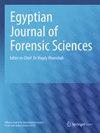A decision support system to determine the amount of wergild and compensation based on forensic medicine clinical examinations
IF 1.3
Q3 MEDICINE, LEGAL
引用次数: 0
Abstract
Forensic medicine is crucial in ensuring that the law and justice are carried out as swiftly, effectively, clearly, and accurately as possible. The significant number and interactions of forensic clinical examination variables, the complexity of their differentiation, and the existence of multiple decision-making paths can lead to erroneous decisions that cause irreparable harm to individuals and society. This study aimed to develop and evaluate a decision support system for determining the amount of wergild and compensation based on forensic medicine clinical examinations and the severity of the patient’s injury. A total of 264 data elements and decision-making rules were identified based on an analysis of information sources and focus group discussions. In addition, a decision tree was used to organize the decision-making rules. Then, a system was developed using algorithms for intelligent decision-making. We included 500 patients in our analysis. This system was ultimately evaluated based on the following criteria: precision and accuracy, sensitivity, specificity, usability, and documentation quality. The results indicated that the precision and accuracy, sensitivity, and specificity of the system were 100%. Furthermore, the documentation quality (completeness) increased from 78.2 to 100%. The average score for system usability was 4.35 out of 5, indicating a highly acceptable range. The designed system was effective and beneficial for forensic clinical examinations and quantifying physical damage (wergild and compensation). Therefore, this system can be utilized in forensic medicine’s administrative and clinical processes, and its production and commercialization will result in an adequate market penetration rate. In addition, this will empower forensic medicine physicians and reduce decision-making errors.根据法医临床检查确定遗产和赔偿金额的决策支持系统
法医学对于确保法律和正义得到尽可能迅速、有效、清晰和准确的执行至关重要。法医临床检查变量的数量巨大且相互影响,其区分的复杂性以及多种决策路径的存在都可能导致错误的决策,从而对个人和社会造成无法弥补的伤害。本研究旨在开发和评估一个决策支持系统,用于根据法医临床检查结果和患者伤情的严重程度来确定抚恤金和赔偿金的数额。在分析信息来源和焦点小组讨论的基础上,共确定了 264 个数据元素和决策规则。此外,还使用决策树来组织决策规则。然后,利用智能决策算法开发了一个系统。我们在分析中纳入了 500 名患者。最终根据以下标准对该系统进行了评估:精确度和准确度、灵敏度、特异性、可用性和文档质量。结果表明,该系统的精确度和准确性、灵敏度和特异性均为 100%。此外,文件质量(完整性)从 78.2 分提高到 100%。系统可用性的平均得分为 4.35 分(满分 5 分),表明在可接受范围内。所设计的系统对于法医临床检查和量化物理损伤(骸骨和赔偿)是有效和有益的。因此,该系统可用于法医学的行政和临床流程,其生产和商业化将带来足够的市场渗透率。此外,这还将增强法医的能力,减少决策失误。
本文章由计算机程序翻译,如有差异,请以英文原文为准。
求助全文
约1分钟内获得全文
求助全文
来源期刊

Egyptian journal of forensic sciences
MEDICINE, LEGAL-
CiteScore
2.00
自引率
0.00%
发文量
51
审稿时长
17 weeks
期刊介绍:
Egyptian Journal of Forensic Sciences, the official publication of The International Association of Law and Forensic Sciences (IALFS), is an open access journal that publishes articles in the forensic sciences, pathology and clinical forensic medicine and its related specialities. The journal carries classic reviews, case studies, original research, hypotheses and learning points, offering critical analysis and scientific appraisal.
 求助内容:
求助内容: 应助结果提醒方式:
应助结果提醒方式:


